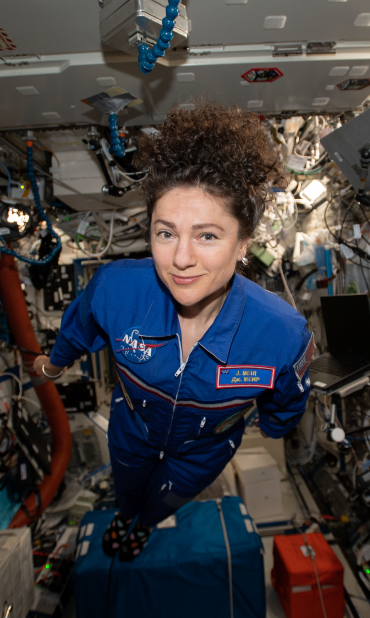NASA’s Johnson Space Center Hosts Exploration Park
NASA’S Johnson Space Center, which is leading the commercialization of space with commercial cargo and crew programs, private astronaut missions to the space station, and a host of Artemis campaign activities also is supporting the development of commercial space here on Earth.
Through the development of Exploration Park, the center will broaden the scope of the human spaceflight community that is tackling the many difficult challenges ahead. Facilities are beginning construction on a 240-acre parcel of underutilized federal land on the center’s southeast corner will foster a collaborative development environment that increases commercial access and enhances the United States’ commercial competitiveness in the space and aerospace industries. These commitments will help maintain the center’s position as the hub of human spaceflight by developing strategic partnerships, and paving the way for a thriving space economy.

“For more than 60 years, NASA Johnson has been the hub of human spaceflight,” Director Vanessa Wyche said. “Exploration Park will be the next spoke in the larger wheel of a robust and durable space economy that will benefit not only exploration of the Moon, Mars and the asteroids, but all of humanity as the benefits of space exploration research roll home to Earth.”
Exploration Park will be a key achievement under the center’s Dare | Unite | Explore campaign, with facilities that provide additional opportunities for NASA to work with industry to share information about how to build commercial space stations in low Earth orbit, and to design lunar-capable commercial spacesuits and lunar landers that will be provided as services to both NASA and the private sector to accelerate human access to space.
NASA has signed two leases, one with the Texas A&M University System and another with the American Center for Manufacturing and Innovation (ACMI), to develop the acreage with facilities that will enable commercial and defense space manufacturing. The campus will incorporate an applied research facility partnered with multiple stakeholders across academia, state and local government, the Department of Defense, and regional economic development organizations.
“At NASA Johnson, we have a vision to dare to expand frontiers and unite with our partners to explore for the benefit of all humanity,” Wyche said. “The future of Texas’ legacy in aerospace is bright as Exploration Park will create an unparalleled aerospace, economic, business development, research and innovation region across the state.”

Texas’ role in space exploration and aerospace development was also highlighted during Governor Greg Abbott’s visit to Johnson on March 26, 2024, to announce the launch of the Texas Space Commission and the Texas Aerospace Research and Space Economy Consortium. Speaking at a ceremony in Johnson’s Space Vehicle Mockup Facility, Abbott said that these new entities will promote innovation in the fields of space exploration and commercial aerospace, including by identifying research and development opportunities.
“We are so excited for what the Texas Space Commission will bring to the state of Texas and the flourishing aerospace industry here,” Wyche said. “With continued investment in the region, the Texas economy will benefit significantly from the ancillary job creation and growth resulting from new aerospace companies in the state.”
As the home of Mission Control Center for the agency’s human space missions, astronaut training, robotics, human health and space medicine, NASA Johnson leads the way for the human exploration. Leveraging this unique role and location, Exploration Park will play a key role in helping the human spaceflight community attain U.S. goals for the commercialization and development of a robust space economy by creating an infrastructure that fosters a multi-use environment where academic researchers, aerospace companies and entrepreneurs can collaborate with NASA. Exploration Park will create an infrastructure that allows for a multi-use space hardware development environment, where academic researchers, aerospace companies and entrepreneurs can collaborate on space exploration’s greatest challenges.































